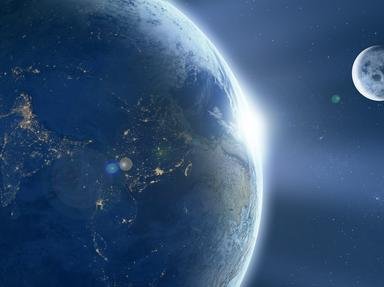Quiz Answer Key and Fun Facts
1. The four moons discovered by Galileo are among the largest natural satellites in the Solar System, but which is the largest of the four of them?
2. All four moons orbit Jupiter at fairly close distances, but which of them is the closest?
3. Each of the four Galilean moons has a different type of surface, ranging from heavily cratered, to incredibly smooth and unmarked by surface features. Which of the four has the smoothest surface?
4. As one moon has the smoothest surface, so another must have the most features. Which of the four has the most pock-marked and cratered surface?
5. When Galileo discovered the four moons, he dedicated them to his patron, Cosimo II de' Medici. Of which Italian state was he the ruler?
6. The names of the four moons were not originally coined by Galileo, but instead by which other astronomer?
7. Three of the four moons are in what is called an orbital resonance, meaning that they periodically align with each other at points in their orbits. Which of the four is not part of this system?
8. During its flyby of Jupiter in 1979, Voyager 1 detected the first instance of current volcanic activity on a body other than Earth, when it detected eruptions on which moon?
9. Below the surface of one of the moons is believed to be a vast water ocean, which causes vast plumes of water vapour on the surface, and which is thought to be one of the more possible locations of extra-terrestrial life. On which of the moons is this believed to be located?
10. The four moons are all named for lovers of Zeus, the Greek counterpart of Jupiter. Which of the four is the only one named for a male?
Source: Author
Red_John
This quiz was reviewed by FunTrivia editor
rossian before going online.
Any errors found in FunTrivia content are routinely corrected through our feedback system.
